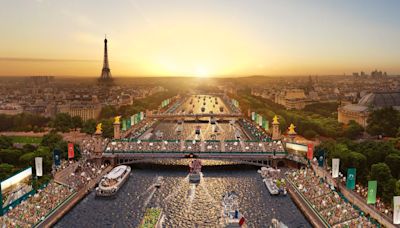Search results
History of Paris - Wikipedia. Contents. hide. (Top) Prehistory. The Parisii and the Roman conquest (250–52 BC) Roman Lutetia (52 BC–486 AD) From Clovis to the Capetian kings (6th–11th centuries) Middle Ages (12th–15th centuries) 16th century. 17th century. 18th century. French Revolution (1789–1799) Under Napoleon I (1800–1815)
Paris. Banner wikivoiaj. Parisul este capitala Franței, și cu 2 milioane de persoane trăind în centrul orașului și peste 10 milioane în suburbii, este și unul din cele mai mare orașe din Europa .
People also ask
Who ruled Paris in the late Roman Empire?
Who were the Parisians?
Where is Paris located?
Who lived in Paris in the 19th century?
Paris is the capital and most populous city of France. With an official estimated population of 2,102,650 residents as of 1 January 2023 in an area of more than 105 km 2 (41 sq mi), Paris is the fourth-most populated city in the European Union and the 30th most densely populated city in the world in 2022.
- The Forum of Lutetia
- The Amphitheatre, Or Arenes de Lutece
- The Theatre
- The Baths
- Streets
- Residences
- Aqueduct
- The Île de La Cité
- Cemeteries
- Art and Decoration
The Forum of Lutetia was in the centre of the city, between the modern streets of Boulevard Saint-Michel on the west, Rue Saint-Jacques on the east, rue Cujas to the north and Rue G. Lussac and rue Malbranch to the south. It was two Roman blocks wide and one block long, 177.6 x 88.8 m.Only a small part of a wall of the old forum remains above groun...
The amphitheatre is located near the intersection of Rue Monge and Rue de Navarre. It was about 100 x 130 m in plan, making it one of the largest in Gaul. It could accommodate as many as 17000 spectators.[citation needed] It had a stage and backdrop used for the presentation of plays, along with a larger space suitable for the combat of gladiators ...
The Roman theatre of Lutetia was located where the Lycée Saint-Louisis today, along Boulevard Saint-Michel. It occupied one of the central blocks of the Roman city, three hundred Roman feet on each side. It was probably built in the second part of the 1st century AD, based on coins found; it was renovated in the 2nd century. Like many other buildin...
The Thermes de Cluny, the grand public baths, now part of the Musée de Cluny, are the largest and best-preserved vestige of Roman Lutetia and date from the late 1st or early 2nd century AD. They were at the junction of the two major Roman roads, between Boulevard Saint-Michel, Boulevard Saint-Germaine, and the Rue des Ecoles.The baths originally oc...
The streets and squares were laid out in blocks ("insular") of 300 Roman feet (88.8 m) square. As a result the modern Rue Saint Martin and Rue Saint-Denis, which were both laid out in Roman times, are 600 Roman feet apart.Excavations of the streets have uncovered the ruts in the roads from the wheels of chariots and wagons. The roads were regularly...
The residential streets of Lutetia, unlike the boulevards, were irregular and not as-well maintained as they were the responsibility of the home-owners, not the city. Traces of several of these early residential neighbourhoods, dating to the beginning of the 1st century AD, particularly on the Rue de l'Abbé de l'Épée, rue Pierre-et-Marie-Curie, and...
The source of the aqueduct was in the hills outside the city at Rungis and Wissous in the present department of the Essonne where a collection tank was excavated. The aqueduct was built in the second half of the 1st century AD mainly to supply the monumental public baths of Cluny. The aqueduct could deliver an estimated 2000 m3 of water a day.[cita...
Beginning in 307 AD, the increasing number of invasions of Gaul by Germanic tribes forced the Lutetians to abandon a large part of the city on the left bank, and to move to the Île de la Cité. Vestiges of Roman buildings on the island, including baths, were found under the parvis of Notre-Dame in 1965 and can be seen today. The rampart was about tw...
During the early, or High Roman Empire, the major Roman necropolis, or cemetery, was located near the Cardo Maximus (Main Street), close to the exit of the city and some distance from the nearest residences. The Necropolis of Saint-Jacques was close to the modern intersection of Avenue Saint-Michel and Avenue Denfert-Rochereau. It occupied a space ...
Lutetia was both a trading centre for art works, through its access to water and land routes, and, later, the home of workshops ceramics and other decorative works.[citation needed]Sculpture was widely used in monuments, particularly in the several necropoli, or Roman cemeteries, in the outskirts of the city. The Pillar of the Boatmen was donated t...
Dupa retragerea trupelor germane, radicalii francezi au pus in pripa bazele Comunei Parisului. In timpul Primului Razboi Mondial nemtii au fost impiedicati sa cucereasca Parisul dar au facut-o in timpul celui de-al Doilea Razboi Mondial din 1940 pana in 1944. Parisul a asistat iarasi la scene violente in timpul rascoalei studentilor in 1968.
Parisul este capitala Franţei, şi cu 2 milioane de persoane trăind în centrul oraşului şi peste 10 milioane în suburbii, este şi unul din cele mai mare oraşe din Europa . Cuprins. 1 De înţeles. 2 Intră. 2.1 Cu avionul. 2.2 Cu vaporul. 2.3 Cu trenul. 2.4 Cu autobuzul. 2.5 Cu maşina. 3 Ajuns acolo. 4 De văzut. 5 De făcut. 6 De învăţat. 7 De lucrat.
Cunoscut si ca “Orasul Luminilor”, Parisul este considerat unul dintre cele mai romantice orase ale lumii. Situat pe malurile Senei, in partea central-nordica a Frantei, Parisul detine numeroase muzee si galerii de arta, fiind cel mai vizitat oras din lume, cu mai mult de 30 de milioane de vizitatori anual. Simbolul orasului este Turnul ...





